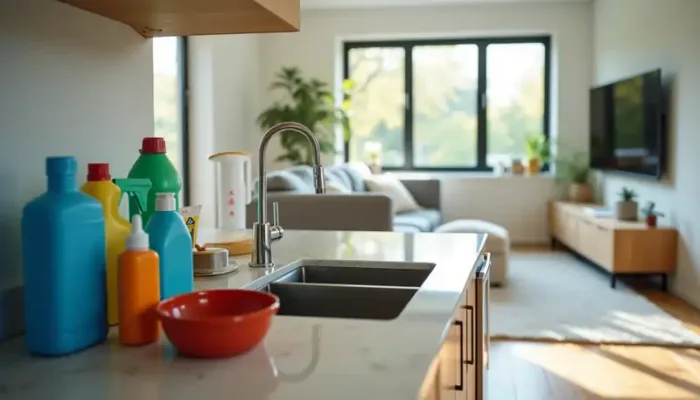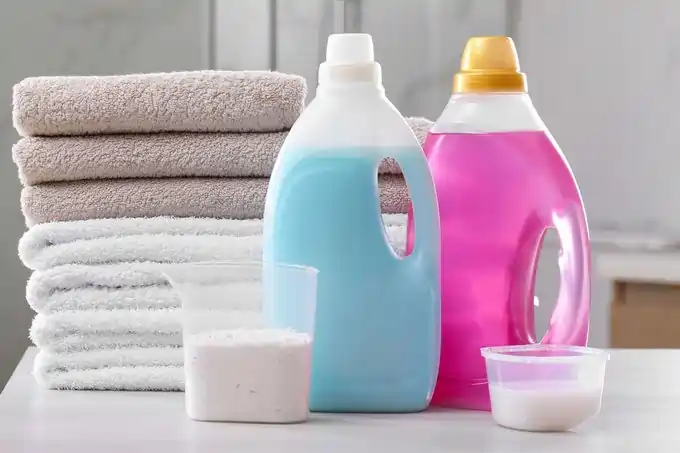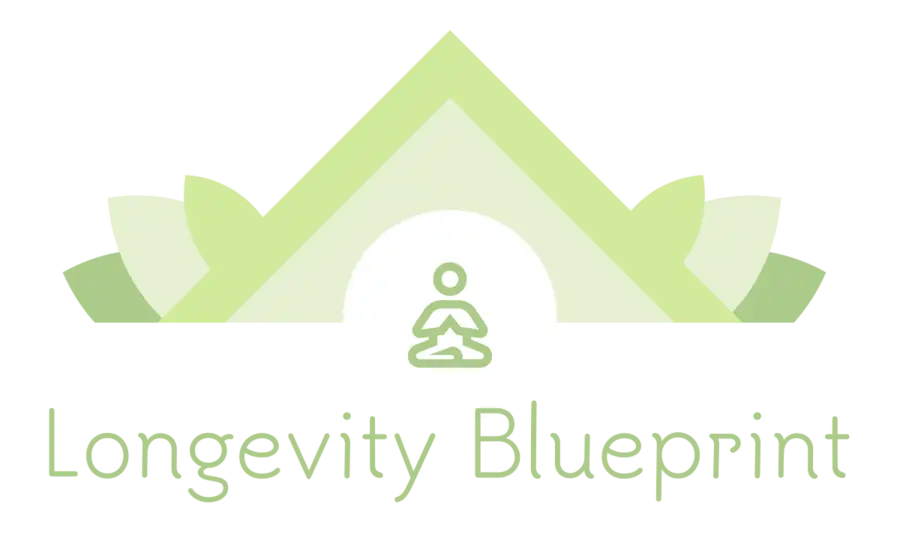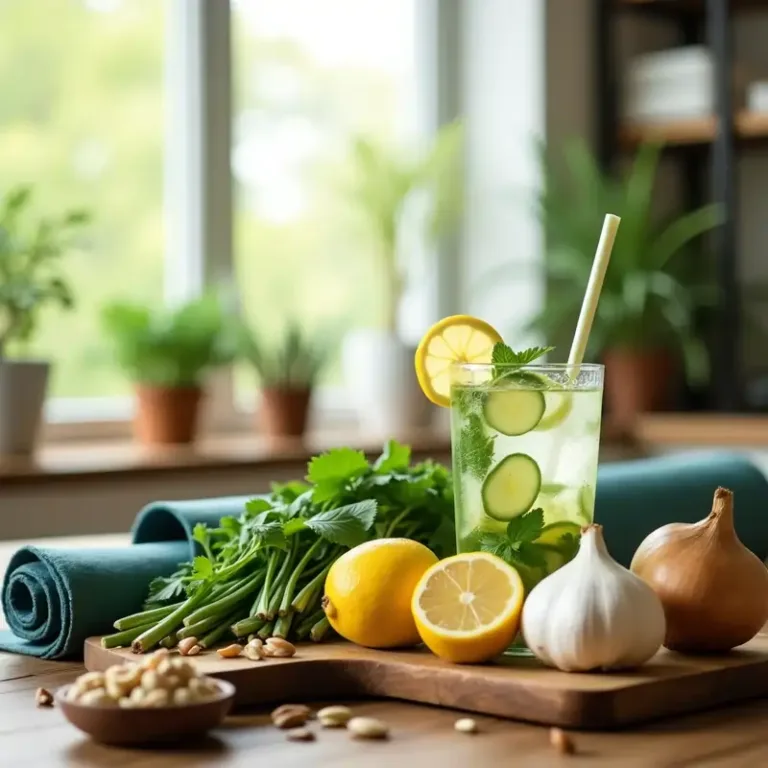How to Spot Hidden Toxins in Your Home: A Room-by-Room Guide

Your home’s air quality might shock you. The air inside your house could be 5 times more polluted than what you breathe outside.
Hidden toxins lurk everywhere in our homes and create serious health risks. Scientists have found 45 different chemicals in indoor dust. Everyday items like scented candles contain dangerous carcinogens. These top 10 toxins exist right under your nose. Daily exposure to household toxins poses greater dangers than occasional contact. These invisible threats affect your respiratory health and hormonal balance.
We created this detailed room-by-room guide to help you spot and remove these dangers. Your kitchen containers might contain BPA. Your furniture could release endocrine disruptors. Radon gas might seep through your foundation. This guide shows exactly what to look for and how to protect your family.
Let’s make our homes safer, one room at a time.
Understanding Common Household Toxins
Your home contains countless chemicals, but they’re not all harmful. The first step to creating a safer home environment is learning about what makes a substance toxic and how it gets into your body.
In this section:
What Makes a Chemical Toxic?
A substance’s toxicity refers to its capacity to harm your health. Every chemical can be toxic under specific conditions, but the key lies in how much exposure leads to harm [1]. Three crucial factors determine a substance’s toxicity: its chemical structure, the ease of body absorption, and your body’s ability to detoxify and remove it [1].
A chemical’s hazard level depends on both its toxicity and real-world potential to cause harm. Multiple factors come into play, such as exposure route, dose, duration, and personal susceptibility [2]. On top of that, your body’s metabolism can transform chemicals into substances even more toxic than the original [1].
How Toxins Enter Your Body
Your body can absorb chemicals through four main pathways, with breathing being the most common [3]:
Inhalation – Your lungs absorb chemicals from contaminated air into your bloodstream.
Skin and eye contact – Your skin provides protection, but many chemicals—especially liquids—can penetrate it. Skin’s keratin layer resists water but struggles against organic chemicals and solvents [3].
Ingestion – Chemicals enter when you eat or drink, usually from contaminated hands, food, or cigarettes that weren’t kept away from work areas [3].
Injection – Though rare in homes, chemicals can enter directly through cuts or punctures [4].
Your bloodstream carries these chemicals throughout your body, potentially damaging organs far from where they first entered [3].
Most Dangerous Household Toxins
These top 10 toxins lurk in your home:
PFAS (Per- and polyfluoroalkyl substances) – These appear in non-stick cookware, food packaging, and water-resistant fabrics. Scientists link them to cancer and immune system damage [5].
Lead – This potent neurotoxin exists in old paint, pipes, and dust. It particularly harms children’s brains and behavior [5].
Formaldehyde – Building materials, textiles, and cosmetics contain this known carcinogen that affects your immune system [6].
Phthalates – These endocrine disruptors, found in plastics and beauty products, can disrupt hormones and reproductive health [7].
Volatile Organic Compounds (VOCs) – Cleaning supplies, air fresheners, and furnishings release these compounds. They cause breathing problems, allergic reactions, and headaches [8].
Note that long-term exposure to toxic chemicals poses special risks, as some build up in your body or cause damage that won’t heal [1].
Helpful Resources:
- EPA Toxic Substances Portal: epa.gov/toxics-release-inventory-tri-program
- Consumer Product Safety Commission: cpsc.gov
- Environmental Working Group: ewg.org/consumer-guides
Kitchen Danger Zones: From Cookware to Cleaners

Image Source: The Healthy @Reader’s Digest
The kitchen stands as the heart of every home, but it can hide dangers we rarely notice. Your family’s health could be at risk from chemicals that seep into food and toxic fumes that cooking releases.
In this section:
- Hidden Toxins in Food Storage Containers
- Cookware Concerns: Beyond Non-stick Surfaces
- Under the Sink: Decoding Cleaning Product Labels
- Water Quality Issues and Solutions
Hidden Toxins in Food Storage Containers
Chemicals from plastic food containers can make their way into your meals. Tests show phthalates, which are common plasticizers, now exist in almost everyone’s body and link to insulin resistance, high blood pressure, and reproductive problems [9]. PFAS chemicals in food packaging can suppress immune systems, lead to lower birth weights, and raise cancer risks [10].
Here’s what you should know about food storage:
- PFAS showed up in more than half of food packages that Consumer Reports tested [10]
- Organic fluorine levels topped 20 ppm in almost a third of products [10]
- Foods high in fat, salt, or acid tend to pull chemicals from their packaging [10]
Cookware Concerns: Beyond Non-stick Surfaces
Non-stick cookware seems handy but often contains PFAS chemicals. These coatings break down and release toxic fumes once temperatures hit 500°F (260°C) [11]. Research shows PTFE-coated pans pack multiple PFAS chemicals, even those labeled “PFOA-free” [12].
Aluminum cookware brings its own risks. Food cooked in aluminum foil saw aluminum levels jump by 378% in one study [13].
You can stay safer with:
- Cast-iron and stainless steel cookware that’s PFAS-free and lasts longer [14]
- Ceramic-coated pans that passed PFAS-free tests [12]
Under the Sink: Decoding Cleaning Product Labels
Your cleaning supplies might pack harmful chemicals. EWG’s assessment found lung-harming ingredients in 53% of cleaning products, and 22% contained asthma-triggering chemicals [15]. These products release VOCs that lead to breathing problems and allergic reactions [8].
Labels with “danger,” “warning,” or “caution” signal potential risks [16]. Stay away from products that contain ammonia, chlorine bleach, formaldehyde, phthalates, and triclosan [17].
Water Quality Issues and Solutions
Lead pipes and PFAS can contaminate your home’s water. EPA data shows 9.2 million lead service lines run through all 50 states [18]. A good water filter becomes essential for safe drinking water.
Reverse osmosis systems offer the best protection by removing lead, copper, chromium, and many other chemicals [19].
Helpful Resources:
- Environmental Working Group: ewg.org/guides/cleaners/
- EPA’s Safer Choice Program: epa.gov/saferchoice
- NSF International: nsf.org/consumer-resources
Bedroom and Living Areas: Where You Spend Most Time

Image Source: Forbes
People spend about one-third of their lives sleeping and countless hours in living spaces. These rooms can hide some of the most concerning toxins in your home.
What you’ll find below:
- Mattresses and Bedding: What’s Hiding While You Sleep
- Furniture and Carpet: The Flame Retardant Problem
- Electronics and Air Quality: The Invisible Connection
Mattresses and Bedding: What’s Hiding While You Sleep
Your mattress could release harmful volatile organic compounds (VOCs) years after you buy it. Research shows one memory foam model released 61 different VOCs, including known carcinogens benzene and naphthalene [1]. These chemicals trigger headaches, nausea, asthma symptoms and might cause long-term health problems like cancer and fertility issues [1].
The risks are greater for children who sleep 12-14 hours daily with developing bodies [2]. Smart mattress shopping should include looking for Global Organic Textile Standard (GOTS) or Global Organic Latex Standard (GOLS) certifications. These ensure at least 95% organic materials without chemical flame retardants or polyurethane [20].
Furniture and Carpet: The Flame Retardant Problem
Flame retardants in upholstered furniture link to serious health concerns. Scientists have detected these chemicals in all but one of these adults and children tested [2]. These substances impact nervous and reproductive systems, reduce children’s IQ, and might cause cancer [21].
Wall-to-wall carpeting creates additional risks. The International Journal of Environmental Research and Public Health reveals carpeted floors’ connection to respiratory irritation, infections, asthma, and fatigue [2]. Carpets not only release VOCs but also collect dust, allergens, and pollutants. These particles spread through the air during walking or hoovering [2].
Electronics and Air Quality: The Invisible Connection
Electronics release VOCs from components that contain flame retardants. Studies of indoor air quality reveal VOC levels reach 2 to 1,000 times higher indoors compared to outdoors [22]. E-cigarette use inside creates high levels of fine particles that match tobacco cigarettes [23].
Helpful Resources:
- Environmental Working Group: ewg.org
- EPA’s Indoor Air Quality Information: epa.gov/indoor-air-quality-iaq
- Global Organic Textile Standard: global-standard.org
Bathroom and Laundry: Chemical Hotspots

Image Source: Family Handyman
Your bathroom might be the smallest room in your house. Yet this tiny space harbors some of the most dangerous toxins. Personal care products touch your skin directly, and cleaning supplies leave residues that could expose you to a mix of harmful chemicals.
Personal Care Products: Reading Between the Lines
Reading product labels can feel like solving a complex puzzle. Since 2009, 595 cosmetics manufacturers have used 88 chemicals in more than 73,000 products that link to cancer, birth defects, or reproductive harm [3]. The law doesn’t require manufacturers to list all ingredients. The term “fragrance” can hide hundreds of undisclosed chemicals [4].
Key chemicals to watch for include:
- Formaldehyde and formaldehyde-releasing compounds (known carcinogens)
- Phthalates (hormone disruptors affecting reproductive systems)
- Parabens (linked to hormone disruption)
- Mercury and heavy metals (damage nervous system and kidneys)
Shower Curtains and Bath Products
That “new shower curtain smell” isn’t just unpleasant—it’s toxic. Research shows PVC vinyl shower curtains release over 100 chemicals into the air, including volatile organic compounds (VOCs) [24]. These create indoor air pollution 16 times above recommended guidelines [24]. These emissions can last a month or longer [25].
Standard bathroom cleaners contain ammonia, chlorine bleach, and triclosan. These ingredients can cause breathing problems, skin irritation, and other serious health issues [26]. Women who keep using chemical cleaners show reduced lung function as time passes [27].
Laundry Products: What Clings to Your Clothes
Your sweet-smelling laundry might hide invisible toxins. A University of Washington’s study found more than 25 VOCs coming from dryer vents, including seven hazardous air pollutants [28]. These chemicals stick to your clothes and transfer to your skin [29].
The most harmful ingredients include sodium lauryl sulfate (SLS), phosphates, optical brighteners, and synthetic fragrances [30]. Manufacturers don’t have to reveal fragrance ingredients. Products labeled “unscented” often contain masking chemicals instead of being truly fragrance-free [31].
Helpful Resources:
- Environmental Working Group (EWG): ewg.org/guides/cleaners/
- EPA Safer Choice Program: epa.gov/saferchoice
- Women’s Voices for the Earth: womensvoices.org
Conclusion
A toxin-free home demands attention to detail and consistent effort. In this piece, we’ve explored many hidden dangers that exist in everyday items – from toxic cookware in our kitchens to harmful chemicals in personal care products.
Understanding these risks gives us the ability to make better choices. Simple changes can reduce exposure to harmful chemicals by a lot. Switching to safer cleaning products, choosing certified organic mattresses, and filtering drinking water make a real difference.
Note that creating a toxin-free environment takes time. The best approach is to focus on areas where your family spends most time, like bedrooms and living spaces. You can then tackle other rooms and replace harmful products with safer alternatives as your budget allows.
Your family’s protection from hidden toxins depends on staying informed about product ingredients and potential risks. A healthier living environment comes from monitoring indoor air quality, reading labels carefully, and selecting certified non-toxic products.
Helpful Resources:
- Centers for Disease Control and Prevention: cdc.gov/environmental/index.html
- National Institute of Environmental Health Sciences: niehs.nih.gov
- Environmental Protection Agency Indoor Air Quality: epa.gov/indoor-air-quality-iaq
FAQs
What are some common household toxins I should be aware of?
Some common household toxins include PFAS in non-stick cookware and water-resistant fabrics, lead in old paint and pipes, formaldehyde in building materials and cosmetics, phthalates in plastics and beauty products, and volatile organic compounds (VOCs) in cleaning supplies and air fresheners.
How can I reduce toxins in my kitchen?
To reduce toxins in your kitchen, use glass or stainless steel food storage containers instead of plastic, opt for cast-iron or ceramic-coated cookware, choose cleaning products with safer ingredients, and consider installing a water filtration system to remove contaminants from your drinking water.
Are there hidden toxins in my bedroom?
Yes, mattresses and bedding can emit harmful VOCs, while furniture and carpets may contain flame retardants linked to health issues. Look for mattresses with GOTS or GOLS certifications, and choose furniture without added flame retardants to create a healthier sleeping environment.
What should I look out for in personal care products?
When choosing personal care products, be wary of ingredients like formaldehyde, phthalates, parabens, and undisclosed fragrances. Read labels carefully and consider using the Environmental Working Group’s database to find safer alternatives.
How can I improve the air quality in my home?
To improve indoor air quality, regularly ventilate your home, use air purifiers with HEPA filters, choose low-VOC paints and furnishings, avoid synthetic air fresheners, and keep indoor plants that can help filter the air naturally.
References
[1] – https://www.leafscore.com/mattress-guide/mattresses-101/toxic-chemicals/
[2] – https://www.thehealthy.com/home/toxic-bedroom-items/
[3] – https://www.ewg.org/the-toxic-twelve-chemicals-and-contaminants-in-cosmetics
[4] – https://umbelorganics.com/non-toxic-bathroom-swaps/
[5] – https://earthjustice.org/article/toxic-chemicals-hiding-in-our-homes-and-how-we-can-reduce-them
[6] – https://greenamerica.org/your-home-detoxed/13-toxic-chemicals-lurking-your-home
[7] – https://newsinhealth.nih.gov/2016/12/making-healthier-home
[8] – https://www.lung.org/clean-air/indoor-air/indoor-air-pollutants/cleaning-supplies-household-chem
[9] – https://www.consumerreports.org/health/food-contaminants/the-plastic-chemicals-hiding-in-your-food-a7358224781/
[10] – https://www.consumerreports.org/health/food-contaminants/dangerous-pfas-chemicals-are-in-your-food-packaging-a3786252074/
[11] – https://www.healthline.com/nutrition/nonstick-cookware-safety
[12] – https://www.consumerreports.org/toxic-chemicals-substances/you-cant-always-trust-claims-on-non-toxic-cookware-a4849321487/
[13] – https://www.aarp.org/home-family/your-home/info-2021/pots-and-pans-safety-guide.html
[14] – https://www.americastestkitchen.com/articles/7586-are-nonstick-pans-skillets-safe-toxic
[15] – https://www.ewg.org/cleaners/content/findings/
[16] – https://www.sunriseindustrial.com/decoding-cleaning-chemical-labels/
[17] – https://www.premiumbionaturals.com/blogs/articles/toxic-chemicals-to-avoid-in-your-cleaning-supplies?srsltid=AfmBOopVnCJp_AGIyXxQtqnB5CtgT5lhmRx7uxG27BCMQYJkhEhC2r5P
[18] – https://www.nrdc.org/stories/americas-failing-drinking-water-system
[19] – https://www.cdc.gov/drinking-water/about/about-home-water-treatment-systems.html
[20] – https://www.consumerreports.org/home-garden/mattresses/mattresses-without-harmful-chemicals-vocs-a1852704784/
[21] – https://www.homesandgardens.com/solved/secretly-toxic-items-in-your-living-room
[22] – https://www.ul.com/resources/chemicals-affect-indoor-air
[23] – https://pmc.ncbi.nlm.nih.gov/articles/PMC7346849/
[24] – https://www.healthytomorrow.org/wp-content/uploads/2017/01/Toxic-Shower-Curtain-Release-Final.pdf
[25] – https://www.homesandgardens.com/solved/toxic-pvc-shower-curtain-swaps
[26] – https://www.lifeguardli.com/post/bathroom-cleaners-the-good-the-bad-and-the-toxic?srsltid=AfmBOoqsDy1bwHHE-o-AjCzcEPstSH4-RiIu4piariX_xW91KW57sfmv
[27] – https://awenest.in/blogs/the-whole-truth/how-most-bathroom-cleaners-are-toxic-for-the-environment?srsltid=AfmBOoo8FvZ4_tVwpNzZa6Ve_S0cuvmdKN7ozKdBbBARXGBb04ncg7aQ
[28] – https://maisonpur.com/how-to-find-the-best-non-toxic-laundry-detergent/
[29] – https://www.ncbi.nlm.nih.gov/books/NBK561652/
[30] – https://naturallivingfamily.com/natural-home/chemicals-laundry-detergent-ingredients-dangers/
[31] – https://kingcountyhazwastewa.gov/en/news-articles/laundry-products-and-fragrances

